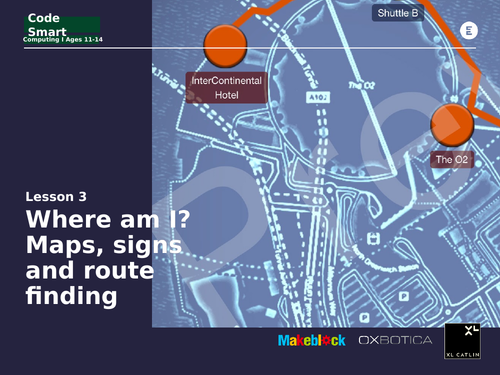





Computing KS3: Mapping and robotic cars will teach students about obstacles and sensors. Students will discuss the risks that a smart city presents, focusing on the challenges that an autonomous vehicle faces while navigating in the real world.
Following on, students will then learn about the ultrasonic sensor on board the mBot and how to use it to avoid obstacles. Finally, they will think about how driving speed can influence a vehicle’s ability to react to obstacles.
This is a single lesson fromt he Computing KS3 unit. Computing KS3 is a computing and robotics education programme based on driverless car technologies. Students will develop their ability to code as well as their design thinking as they tackle smart city challenges.
Through a series of nine lessons, students will learn about aspects of making, programming and design thinking as they build and program their own robot cars. They will work in teams to tackle coding challenges based on the actual problems that engineers are faced with in designing autonomous vehicles. In a final design challenge, students will need to work on not only the technical aspects of driverless cars, but also how they can improve lives and create smarter and safer communities.
All lesson resources are found here: https://encounteredu.com/teachers/units/code-smart-11-14
Something went wrong, please try again later.
This resource hasn't been reviewed yet
To ensure quality for our reviews, only customers who have downloaded this resource can review it
Report this resourceto let us know if it violates our terms and conditions.
Our customer service team will review your report and will be in touch.
